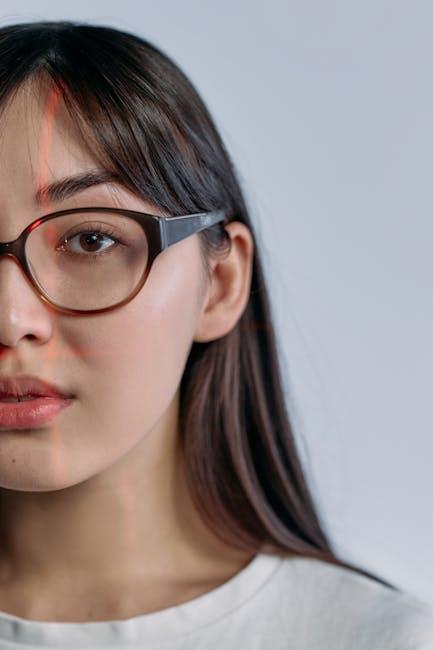As we navigate the bustling currents of technological advancement, one innovation that consistently captures our imagination is smart glasses. The concept, once confined to the realms of science fiction, has steadily progressed from prototype to prototype over the past decade. By 2025, these wearable devices promise to redefine the way we perceive and interact with the world around us. But as we stand on the precipice of this new era, a critical question looms: Are smart glasses ready for mainstream use? This article explores the current landscape, assessing the advancements, challenges, and societal implications of smart glasses as they vie for a place in our daily lives. Join us as we delve into the intricate balance between cutting-edge technology and the realities of consumer acceptance, unveiling whether smart glasses will emerge as everyday essentials or remain niche gadgets in the market.
The Evolution of Smart Glasses Technology and Their Current Capabilities
The journey of smart glasses technology has been nothing short of remarkable, evolving from rudimentary prototypes with limited functionality to sophisticated devices that integrate seamlessly into daily life. Early iterations, such as Google Glass, introduced the concept of augmented reality on a small scale but struggled with user acceptance due to privacy concerns and a lack of compelling applications. Fast forward to 2025, and the landscape has transformed significantly, fueled by advancements in display technology, battery efficiency, and AI integration. Current models now boast features that support a wide range of applications,including real-time navigation,hands-free communication,and even health monitoring. Their lightweight design and improved battery life have created a more user-pleasant experience, making them appealing to a broader audience.
Today’s smart glasses are equipped with various capabilities that leverage cutting-edge technology to enhance everyday activities. Key functionalities include:
- Augmented Reality (AR) applications: Providing real-time overlays of data on the user’s environment.
- Voice control: Allowing users to interact with the device hands-free through voice commands.
- Camera integration: Enabling users to capture moments without the need for an additional device.
- Fitness tracking: Monitoring health metrics such as heart rate and calories burned through built-in sensors.
As manufacturers continue to improve their designs and usability, the connecting thread of consumer feedback drives innovation. A recent survey highlighted user preferences for smart glasses, as illustrated in the following table:
| User Feature Preference | Percentage (%) |
|---|---|
| Augmented Reality features | 45 |
| Battery Life | 30 |
| Camera Quality | 15 |
| Design Style | 10 |

Assessing the User Experience: Comfort, Design, and Practical Applications
In 2025, the user experience of smart glasses will hinge on a delicate balance of comfort, design, and practical applications. As technology evolves, these devices must not only be lightweight and aesthetically pleasing but also functional enough that users feel compelled to integrate them into their daily routines.Anticipated ergonomic advancements will likely focus on customizing fit and reducing strain, ensuring they can be worn for prolonged periods without discomfort. The design will draw inspiration from contemporary fashion trends, aiming to appeal to a broad audience while maintaining a sleek profile that doesn’t compromise on functionality.
When considering practical applications, developers will need to ensure that smart glasses address genuine user needs rather than merely serving as tech novelties. features such as hands-free navigation, augmented reality overlays for interactive learning, and seamless integration with other smart devices will be pivotal. additionally, the following elements will play a critical role in user decisions:
- Battery Life: Long-lasting power to support an active lifestyle.
- Display Clarity: High-resolution visuals for an immersive experience.
- Connectivity: Reliable and robust internet access for real-time information.

Market Trends and consumer Expectations for Smart Glasses in 2025
The landscape of smart glasses is evolving rapidly, with technology poised to shift from niche gadgets to essential everyday tools. by 2025, consumers will expect these devices to seamlessly integrate into their daily lives, offering both utility and style. Key trends shaping this expectation include:
- Enhanced Augmented Reality (AR) Capabilities: Users are looking for smarter integration of AR features that enrich their surroundings without overwhelming their experience.
- Health Tracking Features: Increasing interest in personal health will drive demand for smart glasses that can monitor fitness metrics,vitals,and well-being.
- Bluetooth Connectivity and IoT Integration: Seamless connectivity with smart home devices will be a notable expectation, allowing users to control their environment from their glasses.
- Fashionable Designs: developers will need to focus on aesthetics, blending technology with style for broad market appeal.
Moreover, consumer expectations will pivot toward user-friendly interfaces and seamless functionality. As manufacturers aim for mainstream appeal, the focus will likely include:
| Feature | Consumer Expectation |
|---|---|
| Battery Life | All-day performance without frequent recharging |
| Display Quality | High-resolution visuals for immersive experiences |
| Privacy Controls | Robust features to safeguard personal data |
| Customization | Options for personalization, from frames to applications |

Strategic Recommendations for Brands Seeking to enter the smart Glasses Market
For brands aiming to enter the vibrant smart glasses market, embracing partnerships with tech innovators can be a game changer. Collaborating with established players in the augmented reality and wearable technology sectors can provide invaluable insights into user preferences and technological advancements. Focusing on creating a product ecosystem that enhances user experience will set brands apart. consider these approaches:
- Integration with Mobile Apps: Ensure seamless compatibility with existing smartphone technologies.
- Customization Options: Allow users to personalize their smart glasses for functionality and style.
- User-Friendly Design: Invest in ergonomic designs to enhance comfort and usability.
Additionally, understanding target demographics is essential for triumphant market penetration. Brands shoudl conduct thorough market research to determine the specific needs and preferences of potential users. This includes analyzing trends in fitness, entertainment, and professional applications for smart glasses. A proactive approach might involve:
| Demographic | Key Interests | Preferred Features |
|---|---|---|
| Tech Enthusiasts | Latest Gadgets | High-tech functionality |
| Fitness Buffs | Health Tracking | Workout Integration |
| Professionals | Productivity Tools | Smart Notifications |
Wrapping Up
As we peer into the horizon of 2025, the narrative surrounding smart glasses is increasingly compelling.No longer confined to the domain of sci-fi fantasies, these innovative devices are poised to bridge the gap between our digital and physical worlds. with advancements in technology, user experience, and design, it’s clear that smart glasses are evolving beyond mere novelty. Yet, the path to mainstream adoption is paved with challenges — from societal acceptance to privacy concerns.
Ultimately, the fate of smart glasses will hinge on the delicate balance between utility and user comfort. As we stand on the threshold of this new frontier, it’s crucial to consider not only the capabilities of this cutting-edge technology but also the broader implications it holds for our daily lives.Whether as a companion to our smartphones or as a standalone tool that redefines how we interact with our environment, one thing is certain: smart glasses are on the verge of changing the way we see the world. The question remains — are we ready to embrace this shift? Only time will tell,but the vision for a smarter,more interconnected future is within our grasp.



